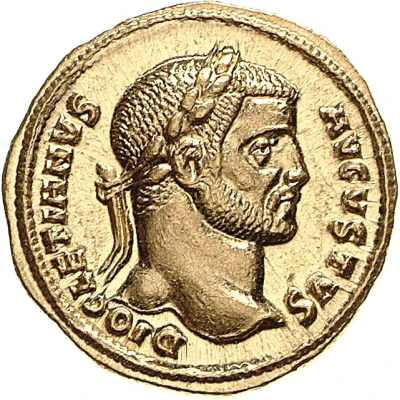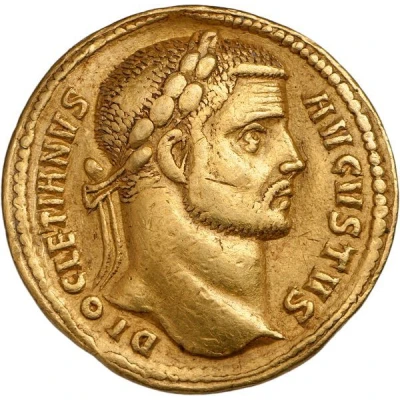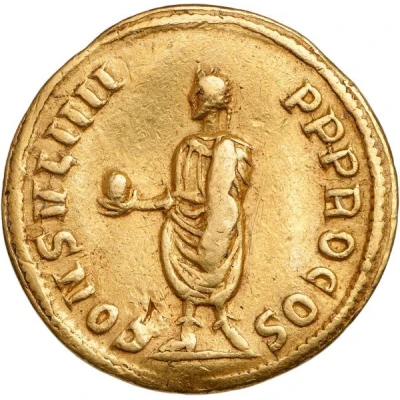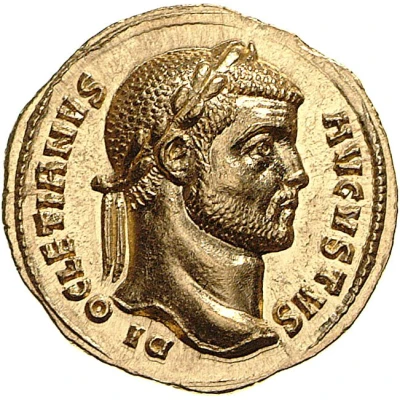
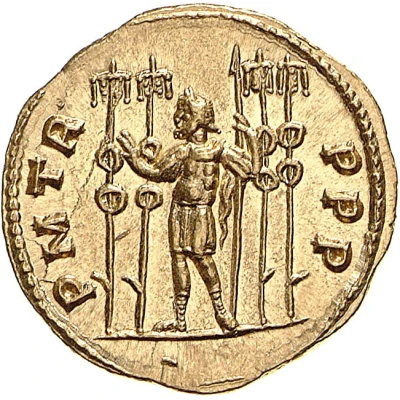

© Münzkabinett - Staatliche Museen zu Berlin (CC BY-SA 4.0)
Aureus - Diocletian P M TR P P P; Cyzicus
| Gold | 6.4 g | 20 mm |
| Issuer | Rome › Roman Empire (27 BC - 395 AD) |
|---|---|
| Emperor | Diocletian (Gaius Aurelius Valerius Diocletianus) (284-305) |
| Type | Standard circulation coin |
| Years | 290-292 |
| Value | Aureus (25⁄2) |
| Currency | Antoninianus, Reform of Caracalla (AD 215 – 301) |
| Composition | Gold |
| Weight | 6.4 g |
| Diameter | 20 mm |
| Shape | Round (irregular) |
| Technique | Hammered |
| Demonetized | Yes |
| Updated | 2024-10-05 |
| Numista | N#306124 |
|---|---|
| Rarity index | 100% |
Reverse
Diocletian, draped, cuirassed, standing left, raising right hand and holding spear in left hand; behind, four ensigns.
Script: Latin
Lettering: P M TR P P P
Unabridged legend: Pontifex Maximus, Tribunicia Potestate, Pater Patriae.
Translation: High priest, holder of tribunician power, father of the nation.
Comment
Source:Online Coins of the Roman Empire (OCRE)
Interesting fact
One interesting fact about the Aureus - Diocletian (P M TR P P P; Cyzicus) coin is that it was issued during a time of significant economic and political change in the Roman Empire. The coin was minted during the reign of Diocletian, who introduced a series of economic reforms aimed at addressing inflation and stabilizing the empire's economy. The Aureus was a key part of these reforms, as it was introduced as a new standardized gold coin that replaced the older gold coins that had been in use for centuries. The coin's design and weight were carefully controlled to ensure consistency and accuracy, and it was used throughout the empire for large transactions and as a store of value. Despite the challenges of the time, the Aureus - Diocletian coin remains a valuable and sought-after collector's item today, offering a glimpse into the economic and political history of the Roman Empire during a time of significant change.
